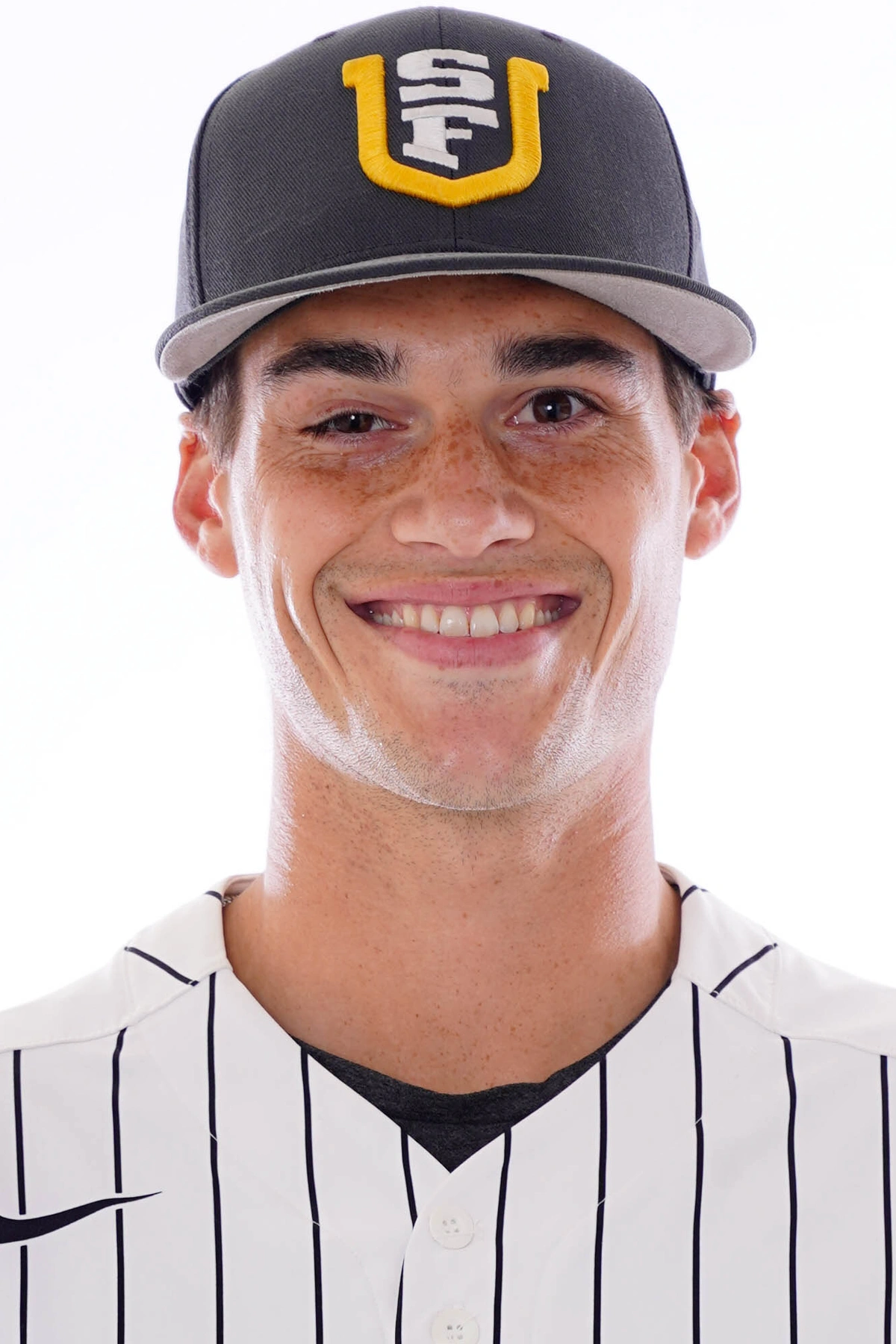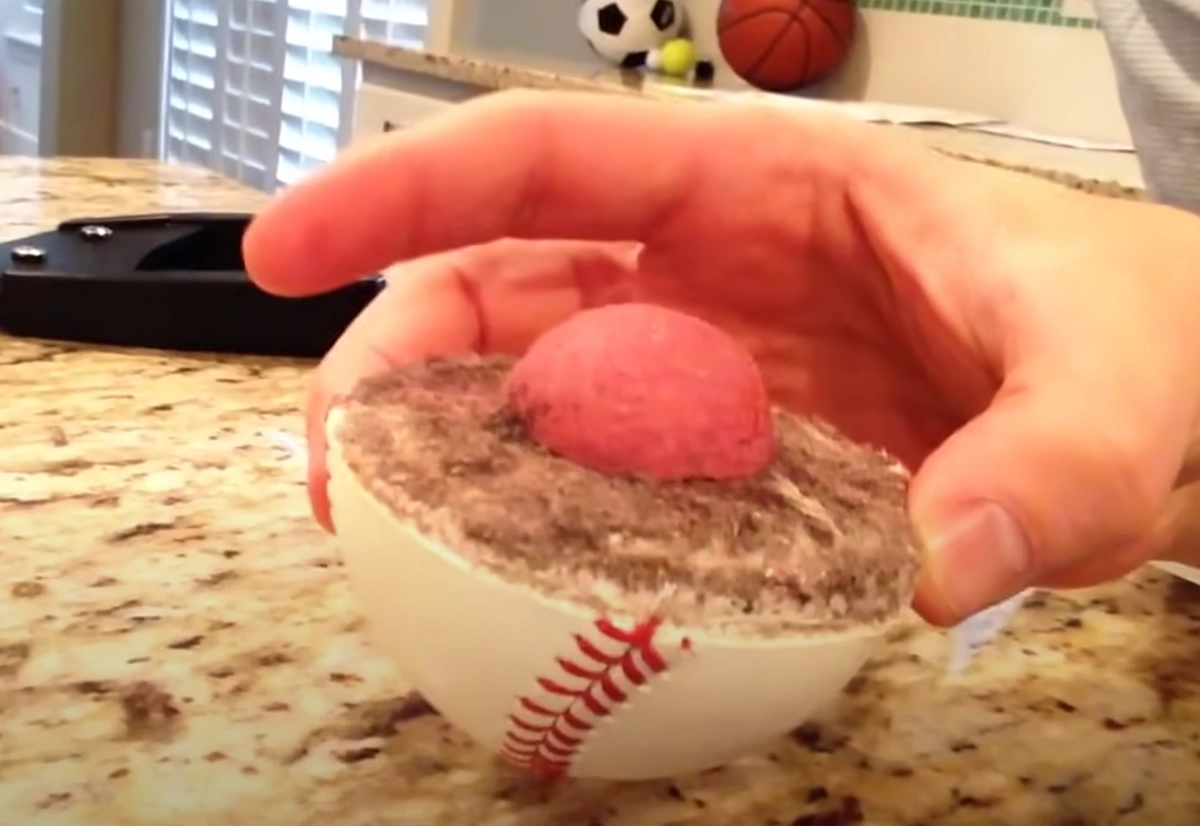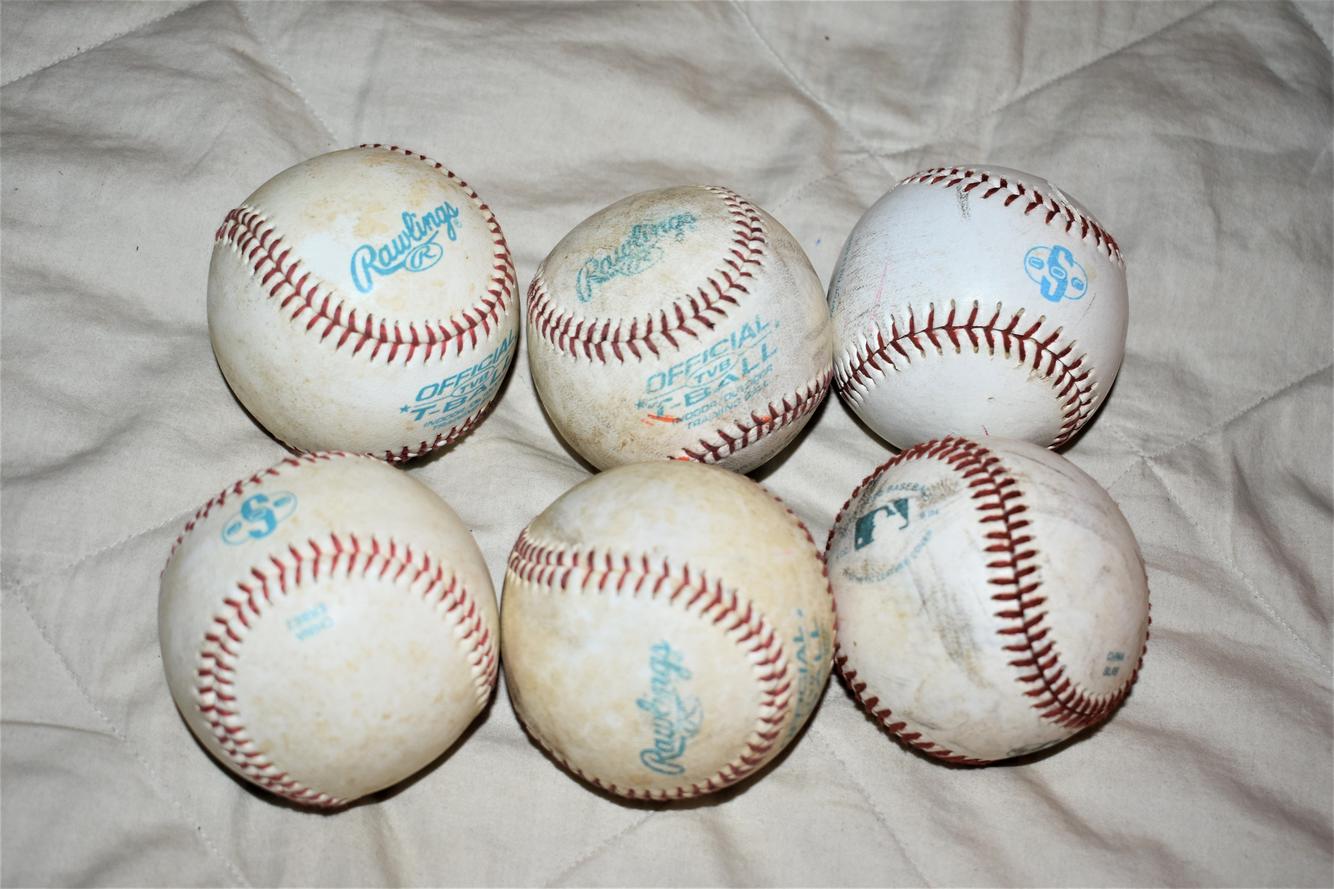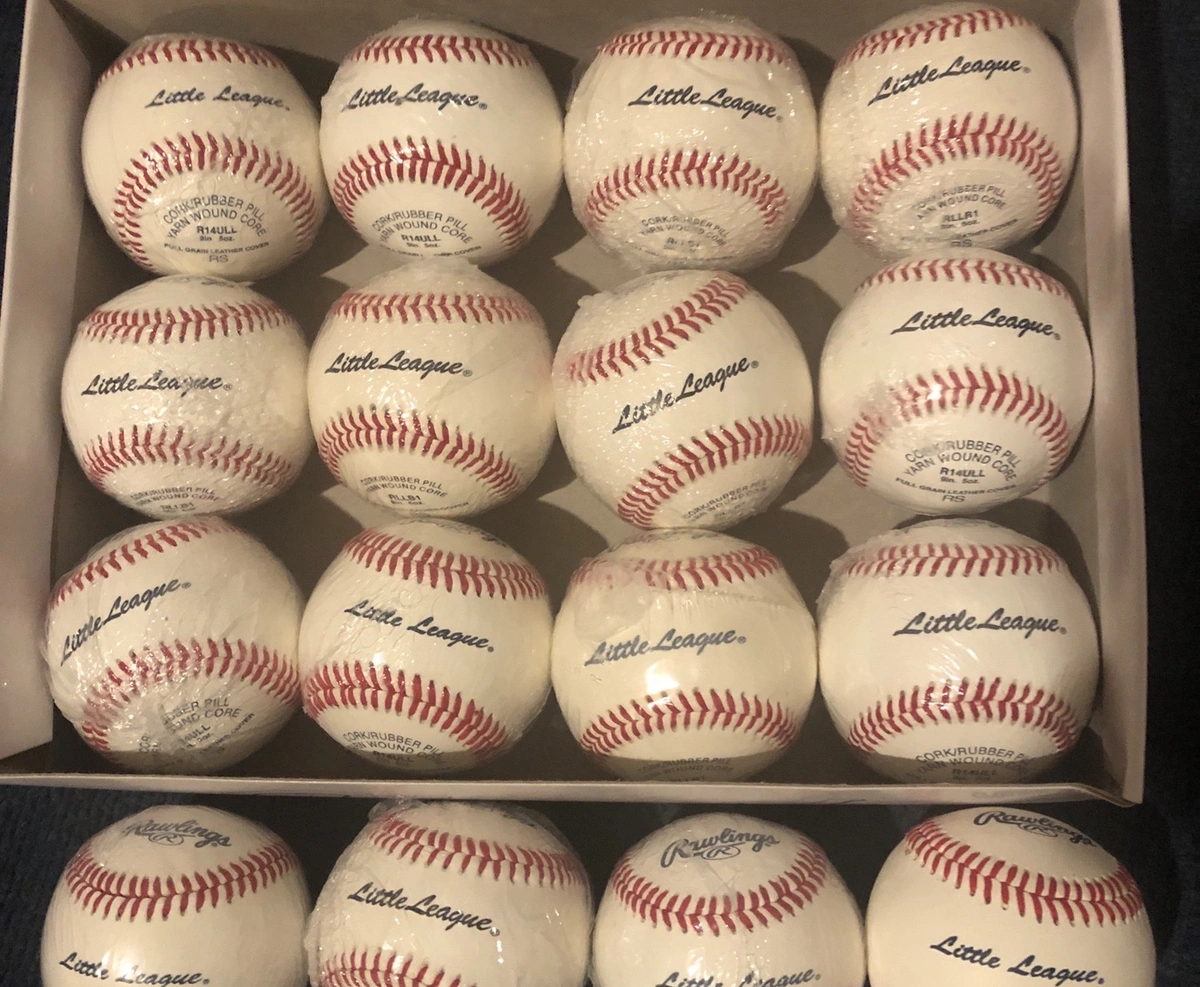A baseball is one of the world’s most recognizable objects. Yet, while many aspects of a baseball’s appearance are obvious (i.e. that they’re circular, white, and have red seams), there’s a lot about baseballs that might surprise you. Perhaps you aren’t aware of what a baseball’s interior looks like, or that there are baseballs specifically designed for every age group/skill level – or maybe you’ve always wondered why a baseball’s seams are red.
I’ve compiled this comprehensive guide to baseballs in order to answer your most pressing questions. And if you’re in the baseball-buying market, this guide should provide you the insights you need to make an informed choice. While you’re likely not excited to be spending so much on baseballs (they can be quite expensive), you’ll at least leave this article with a fun fact or two to share at your kid’s next game. Let’s get into it!
A Baseball’s Anatomy
Before we get into the specific ball types for every level, I want to give a quick anatomy lesson—on baseballs, that is.
Let’s begin with some numbers. A professional baseball weighs between 5-5.25 ounces, and has a circumference between 9-9.25 in inches. There are 216 red, waxed stitches (or ‘seams’) on every single professional baseball. Those seams are red because red contrasts well against the main colors that you’ll find on a baseball field (green and brown, namely), meaning the red seams make the baseball easier to see. A baseball’s white cover (which is either made of leather or a synthetic, dirt-resistant vinyl material) is white for the same reason.
Within each baseball, there are three main components: a cork at the center, two rubber shells wrapped around the cork, and a thin, tight layer of wool wrapped around that. The cork is about the size of a grape. The first rubber shell cocooning the cork is charcoal gray in color, and the second rubber shell on top of that one is pink. The wool that wraps around all of that is done in three layers and, when stretched out fully, spans hundreds of meters in total length. And on top of all that is the white, usually leather cover and red seams. Pretty cool, right?
Well, that’s how professional baseballs are made—but specific baseballs are created for each age and skill level of the game; all of which have distinct qualities that made them ideal for those age groups.
Still from What's Inside's "What's Inside a Baseball?" video
Tee Ball/ “RIF” Baseballs
Tee Ball baseballs are made for the game’s littlest leaguers. Commonly used between 4-8 years of age, these balls are noticeably softer and lighter than baseballs for any other age group. This breed of ball is often called “RIF” baseballs, which is an acronym for ‘Reduced Injury Factor’. Since safety is foremost for baseball players of this age, the baseballs they use have been altered to maximize safety and help youngsters overcome their fear of being hit by the ball. This is done by using a spongy, polyurethane core (rather than a cork, rubber and wool one) that allows the “RIF” baseball to perform like a regular one in every way—except that its softer and safer. The seams on “RIF” baseballs are very raised, so players can get a good grip on the ball when throwing.
Just about every baseball equipment brand produces its own type of Safety/Tee Ball/ “RIF” baseballs, so they should be easy to find. If you’re looking to get your young kid into baseball, I highly recommend investing in some of these baseballs for them and their team. It will make them feel safer and more comfortable, while also providing you peace of mind about your kid’s safety on the baseball diamond.
Little League Baseballs
The next level up from tee-ball is Little League, and the baseballs used at this level are a step up, as well. Little League baseballs are typically for youth players between 9-12 years of age, and are pretty similar to professional baseballs. Yet, there are still some significant differences between Little League Baseballs and the professional ones, mainly to ensure safety.
For one, professional baseball corks are wound extremely tight, which makes for an extremely hard ball. Little League baseball’s, on the other hand, aren’t so tightly strung, which makes them a bit softer (and safer) than professional balls. It’s for this same reason that Little League baseballs won’t travel as far as professional ones—so if you’re preparing for a home-run derby, avoid these Little League baseballs. Or you can use them for your buddies’ rounds while saving the tightly wound balls for yourself.
Little League Baseballs are a perfect combination of the soft and squishy tee-ball version and the battle-hardened professional ones. Their seams are very raised as well, so players can grip the ball. Like with tee-ball baseballs, many companies create their own Little League balls. But in this instance, Rawlings and Diamond seem to produce the best (or at least most popular) ones. But there are other great options on the market, too.
While your Little Leaguer might act like they’re ready for the big leagues, I’d still recommend prioritizing safety at this point in their baseball career. Buying Little League baseballs is the proper way to do so.
High School Baseballs
Next up is high school baseballs, which is for players aged between 13-18. This is when the balls start to resemble the ones used in professional games. The similarities start inside the baseball, with the same cork, rubber, and wool interior that professional baseballs employ. This makes the ball feel harder than Little League balls. High school baseballs also usually have a leather cover, as well, though some brands opt for a synthetic version.
Yet there are also some key differences between high school baseballs and professional ones. Like Tee-Ball and Little League baseballs, a high school ball’s seams are still raised, and they also have a lighter density than that of professional baseballs, which means they’re unable to travel as far. High school baseballs are also designed to be hit by metal bats as opposed to wooden ones.
While there are numerous brands that produce high school baseballs, there is one crucial component to buying balls that you must not overlook: all high school baseballs must be NFHS (National Federation of State High School Associations) Certified for high school competitions. The only way to ensure your baseballs are NFHS approved is checking whether there’s an NFHS logo on the ball. If you’re in the market for high school baseballs, make sure what you’re shopping for is adorned with this logo.
Collegiate Baseballs
Collegiate baseballs are yet another step closer to professional baseballs. The biggest difference between collegiate baseballs and high school baseballs are seen with the seams (see what I did there?) A collegiate baseball’s seams are flatter and more similar to the seams in professional baseball. This allows collegiate baseballs to be hit harder and further than high school ones (hence why the NFHS certification is important for the latter.)
Yet, there are also differences between collegiate and professional baseballs. College baseballs are designed for aluminum bats rather than wood ones, and college baseballs feature a slightly lighter density than professional baseballs.
This is also when the business of baseballs begins to differ from before. Starting in 2015, Rawlings struck a deal with the NCAA (National Collegiate Athletic Association) and NAIA (National Association of Intercollegiate Athletics) to be the sole producer of college baseballs across the country. Because of this, every baseball used in a college game will be a Rawlings one, and will come adorned with either the NCAA or NAIA logo, like the one you see below.
I’ll end this section with a fun fact about college baseballs: in addition to the NCAA logo, all NCAA-approved college baseballs have the specific conference’s logo on them, as well. Meaning, if a box of baseballs is bought by a PAC-12 team, those balls will arrive with the PAC-12 logo in addition to the NCAA one. During my college playing days, each time we went to play a team from a new conference, I tried to steal a ball from them, as a souvenir. I think I got to five before somebody caught me.
Professional Baseballs
Finally, we’ve reached professional baseballs—but the variations don’t end here. There are actually two types of professional baseballs: Major League and minor league balls (but AAA, the minor league level right below Major League Baseball, uses Major League balls). While they’re almost identical to each other, there are some minor differences that make the balls easily discernible for professional players. minor league baseballs are a little softer and have slightly different seams than their Major League counterparts. In addition, Major League baseballs are slicker and harder to grip than Minor League baseballs. Another difference is that Major League baseballs are wound slightly tighter, making them feel harder and allowing the ball to travel further than the minor league version.
Rawlings is the sole producer of both Major League and minor league baseballs. These baseballs are the best that money can buy, and are individually weighed, measured, tested, and inspected for quality and consistency. You’ll know a baseball is from a Major or minor league clubhouse because the ball is adorned with an *official* Major League Baseball tag, and is “signed” by Rob Manfred, Major League Baseball’s commissioner.
Conclusion
And there you have it: a comprehensive guide to the baseballs for every level of America’s Pastime. Before I sign off, I’ll leave all you youth baseball parents/coaches out there with one final thought: while you might be tempted to skip a few of these ball types as your kid progresses, I’d recommend against it. All of these balls are constructed for their specific age groups for a reason; namely, to ensure the players’ utmost safety. Using a ball that’s meant for a higher level isn’t going to accelerate your kid’s development. In fact, it might end up turning them away from the game. So although your kid might feel like they should be using a Major League ball, I’d suggest having them wait until they earn the right to. This will make it sweeter once they do so.



